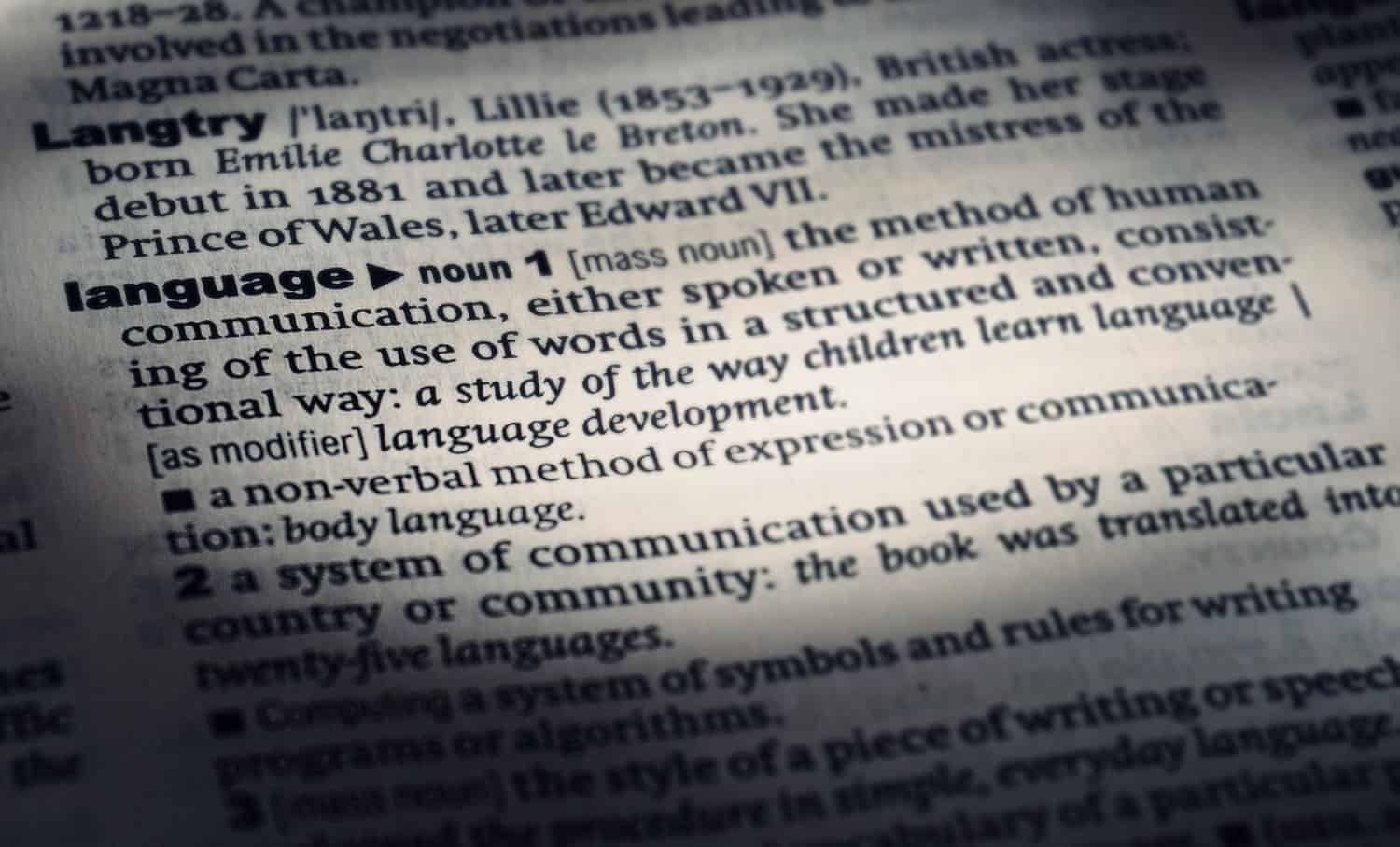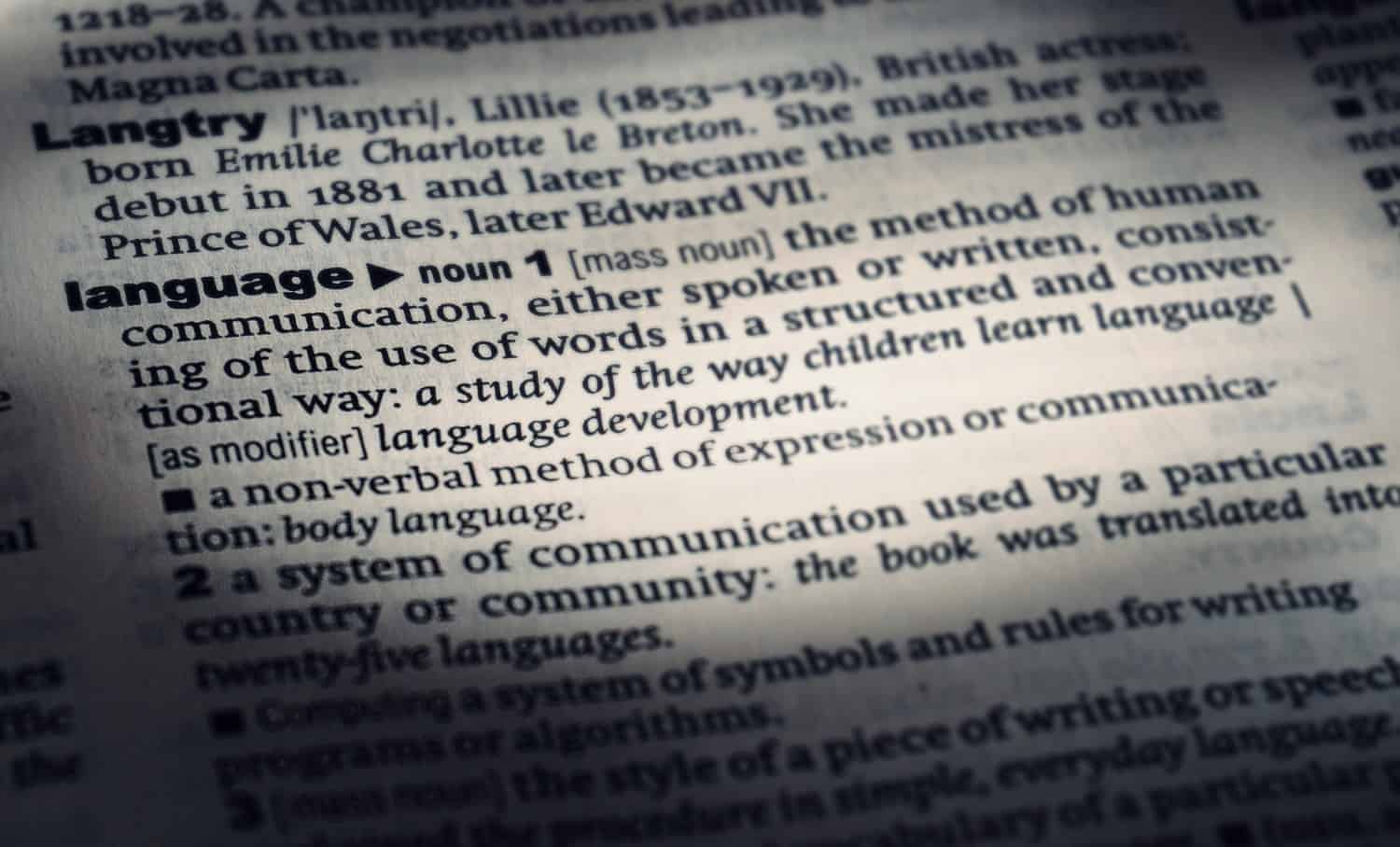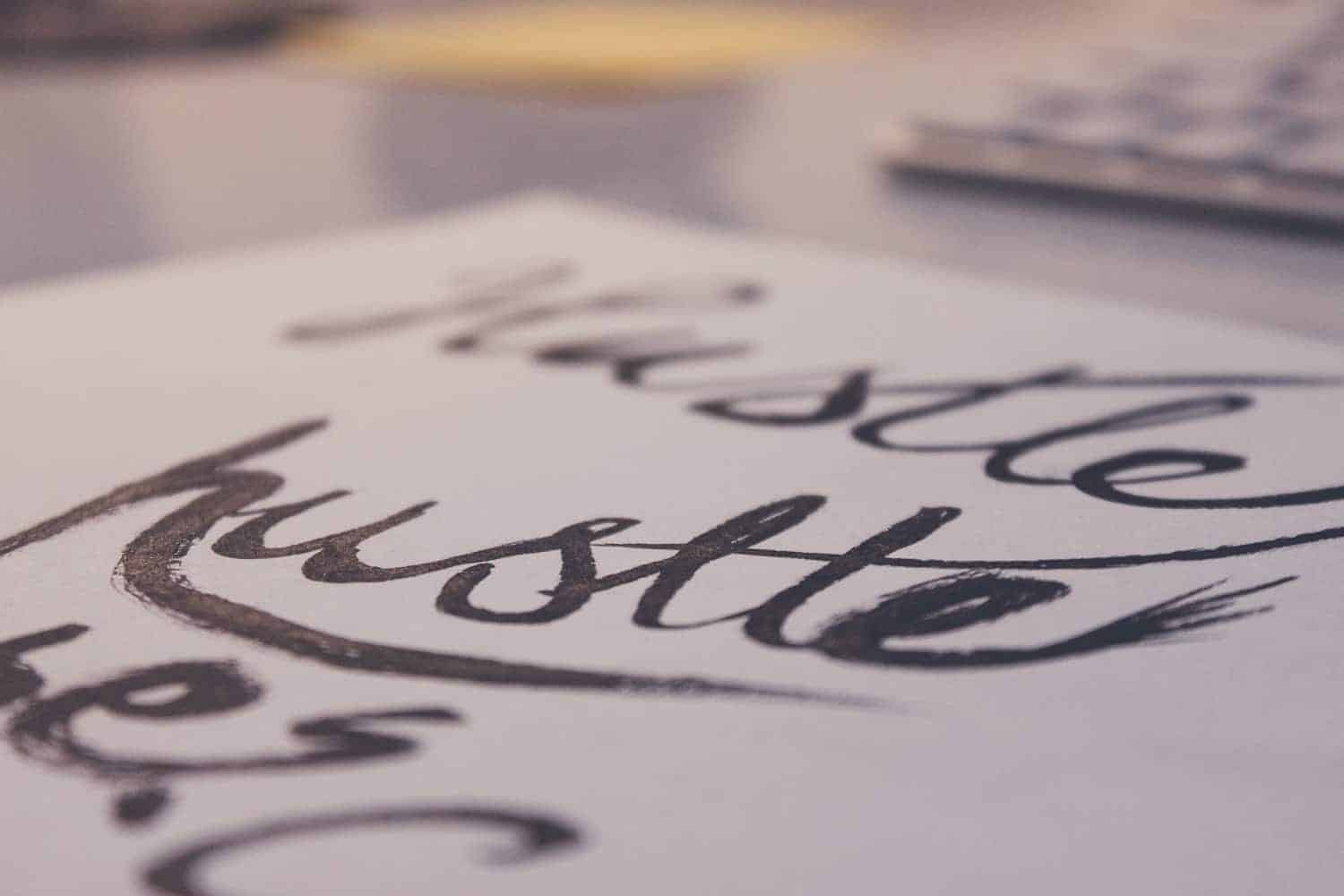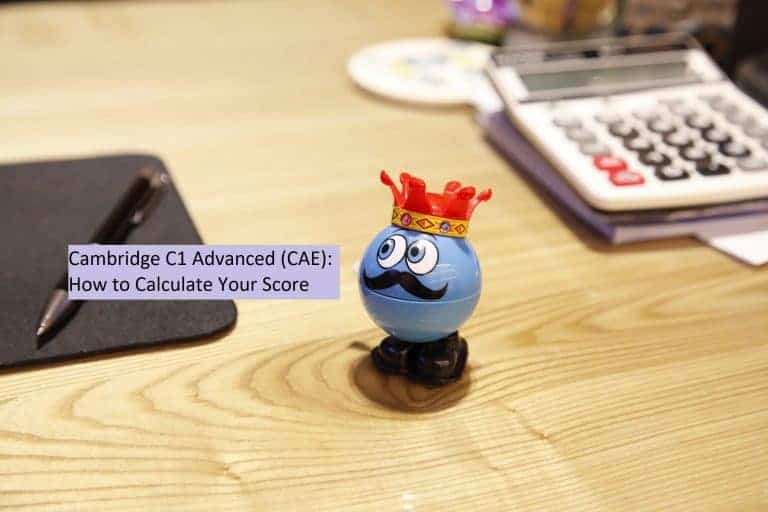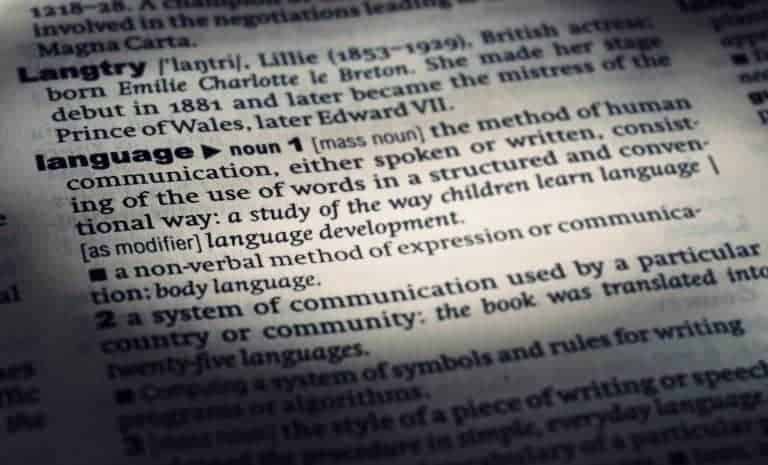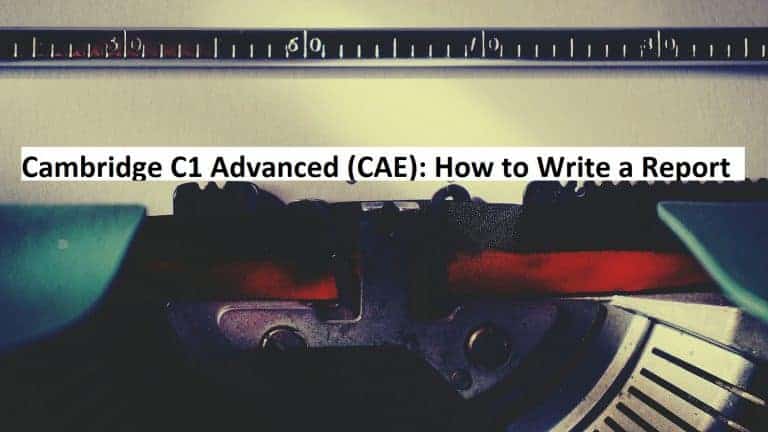Get Your Free C1 Advanced Writing Cheat Sheet Now!
Just leave your name and email address below.
Thank you!
Please check your email inbox and spam folder for your free PDF.
Reading and Use of English Part 6
Reading and Use of English might be the hardest paper in Cambridge C1 Advanced, formerly known as CAE, and many students struggle for different reasons, but one of the most important ones is that there are eight very different tasks, each of which with its unique design and requirements.
In this article, we are going to have a look at Reading and Use of English Part 6, the one part that is markedly different from C1 Advanced’s sister exam B2 First. All the other parts in these two tests are very similar, but Part 6 is special and needs extra attention.
If you are not familiar with the structure or the other parts of Reading and Use of English at all, it might be worth checking my article on the topic where I explain broadly what the test looks like as well as possible general strategies and tips. Just follow the link below to find out more.
>>> Learn more about C1 Advanced Reading and Use of English <<<
What do you have to do in Part 6?
Part 6 – Cross-text multiple matching: You get four short texts and four questions. You need to compare and read across the four texts in order to answer the questions.
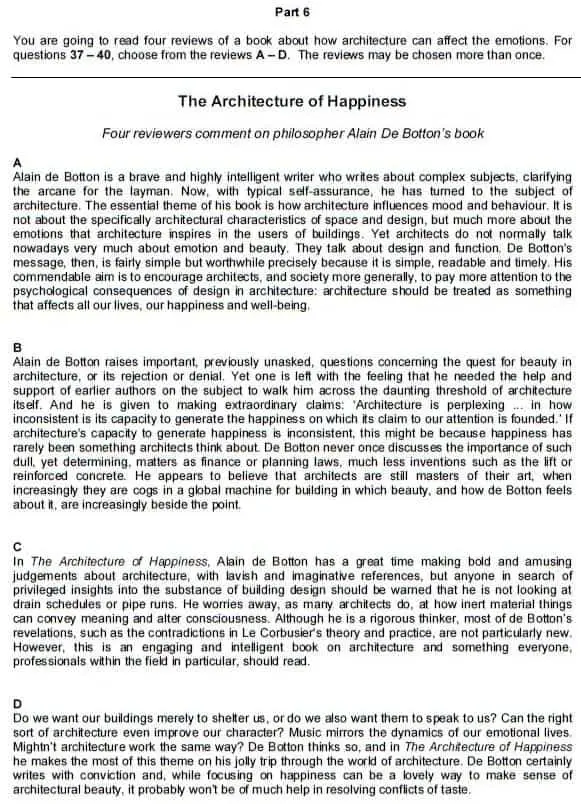
As you can see above, there are four short texts which together still make up a longer text for you to read.
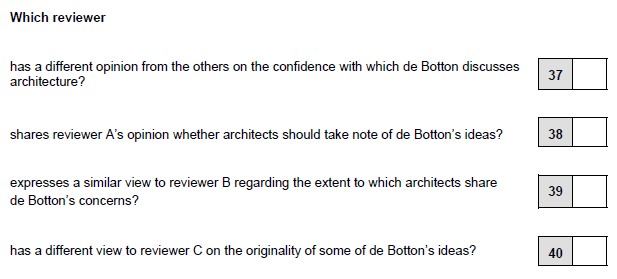
The text is always followed by four questions which refer to all four texts. You need to compare and contrast them in order to be able to answer the questions.
Reading and Use of English Part 6 tests your understanding of underlying opinions and attitudes of different writers as well as agreement and disagreement between them. The opinions and attitudes are not explicitly stated but must be identified by analysing the information in the texts.
Together with Parts 1, 5, 7 and 8, Reading and Use of English Part 6 makes the Reading portion of the paper.
The 3 most common problems with Part 6
Reading and Use of English Part 6 is a tricky task and there are many things that candidates can do wrong without being aware of. In this section, I’m going to show you the three most common problems that I’ve seen over the years teaching Cambridge preparation classes.
However, don’t worry too much about these issues even if you find yourself making some or all of these mistakes because in the following section, we are going to see how exactly you get through Part 6 without all the aches and pains.
Candidates don’t know how to do the task
One of the major issues with Reading and Use of English Part 6 is that you need a clear strategy in order to find the correct answers effectively and efficiently. Unfortunately, many candidates struggle with this point and end up making a lot of mistakes while wasting tons of time which they could use for the other tasks.
Having a structured approach to every single task is absolutely crucial, especially in Part 6 so make sure that you know what to do.
Lack of time management
This point is definitely related to the first problem, but I think it deserves its own mention.
Time is a valuable commodity in C1 Advanced and this applies even more in Reading and Use of English as you only have 90 minutes to complete eight tasks and transfer your answers onto a separate answer sheet.
Therefore, you have to be aware of how much time it typically takes you to complete each task so you can decide which parts you need to work on and become faster at.
Lack of reading and language skills
As you will see in the next section, doing Part 6 is not as difficult as you might think, but even the best strategy and approach becomes useless if your reading skills, i.e. reading speed and text understanding, are not on point.
The focus in this task is on comparing different opinions and attitudes so your language and reading skills have to be well-rounded in order to be able to answer the questions successfully.
Tips and strategies for Part 6
Your preparations for C1 Advanced can’t start early enough. There are just so many things to consider to familiarise yourself with that you should start as soon as possible.
In this section of the article, I’m going to show you exactly what you can do to get ready for Reading and Use of English Part 6 and how you can do this task most effectively and efficiently.
General advice
When it comes to general preparations and practice for C1 Advanced, you should try to establish an English language routine as quickly as you can. The more comprehensible input (stuff that you can understand) you get into your life, the easier it will be for you to get your language skills as well as your reading abilities up to speed.
Nowadays, there are so many useful resources available and I’m sure that you already use a few of them, for example, YouTube, Netflix (or any other streaming service), podcasts, news articles, etc. Choose a topic you like and dive into some English resources. As long as you get the gist and some details of it, your brain will automatically start working and processing the information and you will improve pretty much in your sleep.
Of course, the more time you can invest, the faster you will see improvements, but even a daily routine of just ten minutes of reading or listening to content in English will benefit you over time, so start small and see if you can build on that.
Follow a plan
One of the most frustrating things I deal with in my classes are students who believe that they can simply do an exercise because their level of English is good enough. While it might be true that they are fluent and accurate with their language, Cambridge exams require so much more than just that. It is really important to understand every single task and to know what you have to do. Otherwise, you might be in for a rude awakening once the official exam comes around.
In order to avoid all of this, I always recommend following a step-by-step process that you can easily memorise and recall when you need to.
For Reading and Use of English Part 6, a plan might look something like the one below:
- Read the title and text quickly
- Analyse the questions
- Find the required information
- Compare the opinions/attitudes and choose the correct answer
As this list only contains key phrases, we need to go into more detail so you fully understand how each step of the process gets you closer to the marks you love.
Read the title and text quickly
I recommend this step for pretty much every part in Reading and Use of English, but in Part 6 (and probably Part 7) you definitely shouldn’t skip it because we lay the groundwork for all the other parts of the plan.
The texts in this part often have a scientific ‘flavour’ without requiring you to know any details about the topic or anything like that, but you should be prepared for some unusual or rather specific vocabulary that you don’t usually come across. For this alone, it makes sense you give the text a quick readthrough so that you can switch gears from the often more general or literary texts in the other parts.
An even more important reason to first read the text, however, is that you want to get a general idea of the opinions and attitudes that the different writers have in the four shorter texts. After all, the whole task is about comparing what the different people think about a certain topic so try to get a feeling for what they are trying to say.
It can also be useful to highlight different sections in each text in which you can identify the opinions and attitudes as you might be able to refer back to them once we get to the next steps.
So, don’t forget about this step. In Reading and Use of English Part 6, it can be a lifesaver.
Analyse the questions
As soon as you’ve familiarised yourself with the text, you need to move over to the questions and find out what exactly you’re looking for.
Read the questions carefully and underline the most important parts. Have a look below for an example:
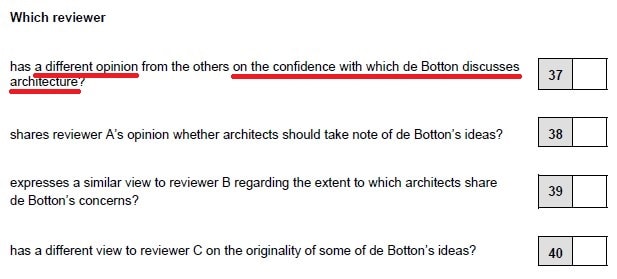
In question 37, we need to find the one reviewer that thinks differently about de Botton’s level of confidence when it comes to the topic of the text.
Immediately, our radar for specific vocabulary should turn on and we are ready to go hunting.
Find the required information
Now it is time to go back to the text and search for the information that the questions dictate. In this step, you need to show that you can scan a text for very specific information, but you also need to show that you did your homework during the first readthrough as we can usually find the differences based on our general feel for the different writers’ opinions and attitudes.
Looking for clues for what the writers think about de Botton’s level of confidence in his arguments we get to the following:
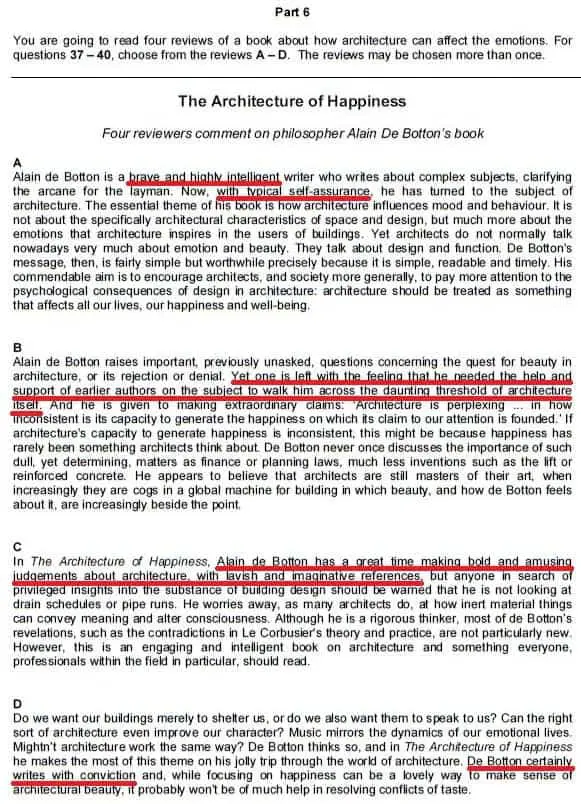
The underlined parts show what each reviewer thinks about that question 37 wants us to find out and it is time for the next step in our fool-proof process.
Compare the opinions/attitudes and choose the correct answer
Last but not least, we need to look at the information we extracted from the texts from the perspective of the question we are trying to answer. In this case, we have to find the one opinion that differs from the others.
In texts A, C and D, we find words and phrases like brave, self-assurance, bold and amusing judgements, and conviction while in text B the reviewer describes the same point with de Botton’s need for help from other authors, which definitely sounds much more negative than the other three reviews.
Concluding our analysis, we can confidently choose text B as the correct answer for question 37. Repeat the last step and this one for the other questions and you will find that Reading and Use of English Part 6 isn’t as daunting as many believe.
Other tips
In preparation for Part 6, it is a good idea to focus a little bit on texts that show different viewpoints on one specific topic, for example, different reviews on the same film or book, as well as academic texts so you can become more comfortable with scientific vocabulary and different ways of discussing a topic and presenting arguments.
In addition, make it a habit to time yourself when practising the different parts in Reading and Use of English. It can help you identify your strengths and weaknesses so that you can reduce the average time it takes you to get through each task.
One of the best aspects of Part 6 is that you earn two marks for every correct answer. Therefore, put extra effort into your prep as you can easily earn higher marks than in other parts. Also, always answer all the questions as you don’t get punished for mistakes in C1 Advanced. You might be lucky and score some extra marks.
[elementor-template id=”1959″]
Practice practice practice
The very last thing for me to say is that you should start with your practice as quickly as possible. C1 Advanced is an exam full of tricks and traps and the more you practise, the easier it becomes for you to identify them.
I hope this article will help you on your journey.
Lots of love,
Teacher Phill 🙂

